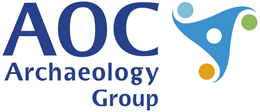Data from a Trial Trenching from Weeford to Whittington, Lichfield, Staffordshire, 2019-2023 (HS2 Phase One)
High Speed Two Ltd., AOC Archaeology Group, Connect Archaeology, 2024. https://doi.org/10.5284/1124381. How to cite using this DOI
Data copyright © High Speed Two Ltd. unless otherwise stated
This work is licensed under a The Open Government Licence (OGL).
Primary contact
High Speed Two Ltd.
2 Snowhill
Queensway
Birmingham
B4 6GA
United Kingdom
Tel: 08081 434 434
Resource identifiers
- ADS Collection: 5625
- DOI:https://doi.org/10.5284/1124381
- How to cite using this DOI
Introduction

This collection comprises text documents, reports, site records, images, spreadsheets, and GIS files from trial trenching carried out by Connect Archaeology at Weeford to Whittington, Lichfield, Staffordshire from 2019 to 2023.
Project Summary
Archaeological trial trenching was carried out by Connect Archaeology in two phases from 24th April to 14th June 2019 and 6th September to 2nd October 2019. In total, 127 trenches were excavated during the two phases of trial trenching. Forty-nine trenches (Trenches 82–84 and 113–158) were unexcavated due to the prevention of access to several areas. Access to complete the Phase 3 archaeological trial trenching, across land between Jerry Lane and the Hints Bypass, was granted in May 2020. The works comprised the excavation of Trenches 113-158 and was carried out by Connect Archaeology between 18th May and 23rd June 2020.
The main aim of the trial trenching was to determine, as far as is reasonably possible, the presence, nature, date, extent, survival and significance of the archaeological resource within the evaluation area primarily in relation to previously identified GWSI:HERDS research objectives, prior to the commencement of the enabling works, so that a suitable mitigation strategy could be put in place to reduce or offset any adverse effects arising from proposed ground disturbance.
The following specific objectives were outlined in the Generic Written Scheme of Investigation:
- Provide further understanding of the transition between a mobile pattern of settlement in the Early Bronze Age to the development of fixed settlement and enclosure, in the Middle and Late Bronze Age;
- Can we identify regional patterns in the form and location of Late Bronze Age and Iron Age settlements across the route, and are there associated differences in landscape organisation and enclosure?
- Investigate the degree of continuity that existed between Late Bronze Age and Iron Age communities in terms of population, mobility and subsistence strategies;
- Explore the evidence for increasing social complexity in the archaeological record in the Late Bronze Age and Iron Age, and identify patterns of intra-regional and regional variation;
- The Romano‐British period saw the beginning of a more established infrastructure network.
- Can we investigate the development of these routes, trackways and roads and the influence they had on landscape change?
- Assess the evidence for regional and cultural distinctiveness along the length of the route in the Romano-British period, with particular regard to the different settlement types encountered along the route;
- Identify evidence for late Roman occupation and attempt to identify any continuity in settlement patterns between the end of the Romano-British period and the Early Medieval period;
- Identify the location and form of Early and Middle Saxon settlement and investigate evidence for land use in the period;
- Identify the location of Middle to Late Saxon settlement, explore processes of settlement nucleation and understand the development of associated field types and agricultural regimes;
- Investigate the impacts on rural communities of social and economic shocks in the mid-14th century and thereafter, and their contribution to settlement desertion;
- and identify patterns of change within medieval rural settlement from the 11th to mid-14th century.
Re-Use Value Statement
The fieldwork revealed evidence of a possible Romano-British settlement, concentrated in the southern end of the evaluation area. A sherd of Roman pottery was recovered from a linear feature to the north of the evaluation area; whilst this artefact may be residual and the feature may be the remains of ridge and furrow, its presence could suggest the presence of Romano-British field systems to the north of the potential settlement, and most likely also in the wider area. Phase 3 trial trenching revealed evidence of likely post-medieval ditches within the evaluation area.
Further work to examine the Romano-British archaeological remains identified at Trenches 104–105, 107 and 160–162 may contribute to HERDS Specific Objective KC21. Results should be reviewed once the remaining trenches in the south have been excavated.
It is unlikely that any further work in the Phase 3 area would contribute to specific project objectives. The process of identifying further works should therefore focus on the Phase 1 and 2 areas to the north where Romano-British archaeological remains have previously been found.







